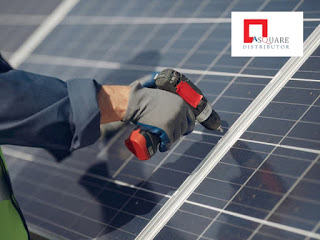How to Prepare Your Home for Solar Panel Installation
With the increasing demand for clean energy, more homeowners are turning to solar energy to cut electricity bills and reduce their carbon footprint. But before you schedule a solar panel installation, it’s crucial to properly prepare your home. Whether you’re working with leading solar companies or a local installer, a well-prepared home ensures a smooth, efficient, and safe transition to solar power.
In this article, we’ll walk you through everything you need to do before your solar panel installation — from evaluating your roof’s condition to understanding permits and planning energy usage. Let’s dive in.
1. Evaluate Your Roof’s Condition
Your roof plays a central role in the success of your solar system. Since solar panel installation involves mounting panels on your roof (in most cases), it must be in good shape.
Key Considerations:
-
Roof Age: If your roof is nearing the end of its lifespan (typically 20-25 years for asphalt shingles), it’s wise to replace or repair it before installing panels.
-
Structural Integrity: A strong, undamaged roof structure is essential. Any sagging, leaks, or broken shingles should be fixed.
-
Orientation and Pitch: South-facing roofs with a pitch between 15° and 40° are ideal in most regions for maximum solar output.
Before moving ahead, request a professional inspection. Most solar companies offer a roof assessment during their site evaluation.
2. Assess Sunlight Exposure
Solar panels perform best when they receive direct sunlight for the majority of the day. Shading from trees, nearby buildings, or chimneys can significantly reduce performance.
What You Can Do:
-
Trim Trees: Cut or trim branches that cast shadows on your roof during peak sunlight hours.
-
Sun Mapping Tools: Many solar companies use tools or drones to perform a solar site analysis and calculate your home’s solar potential.
-
Check Local Sunlight Hours: If your location receives abundant sun throughout the year, solar is a smart investment.
3. Understand Your Energy Needs
A good solar system is tailored to your energy usage. Before the solar panel installation, review your energy consumption patterns.
How to Get Started:
-
Analyze Utility Bills: Look at your past 6–12 months of electricity bills to determine average monthly usage.
-
Consider Future Changes: Will you be adding an electric vehicle, expanding your home, or installing a pool? Plan your solar system accordingly.
-
Ask for an Energy Audit: Some solar companies offer energy audits to help size your solar system and maximize energy efficiency.
4. Research and Choose the Right Solar Company
The success of your solar panel installation greatly depends on the expertise of the installer. Take time to evaluate and compare solar companies in your area.
What to Look For:
-
Experience and Certifications: Choose NABCEP-certified installers with strong customer reviews.
-
Warranty and Support: A good installer will offer warranties on both panels and labor (usually 10-25 years).
-
Transparency: Reputable solar companies will provide a detailed proposal, including system design, pricing, expected savings, and installation timeline.
Getting multiple quotes helps ensure you get the best value and a system tailored to your needs.
5. Check Local Permits and HOA Rules
Before you begin the solar panel installation, it’s essential to secure the proper permits and ensure compliance with local regulations.
Consider the Following:
-
Building Permits: Most municipalities require permits for solar panel systems. Your installer will usually handle this.
-
Zoning Regulations: In some areas, zoning codes limit the size or placement of solar arrays.
-
Homeowners Associations (HOA): Some HOAs have rules about the appearance and location of solar panels. Be sure to review your HOA agreement.
The best solar companies will navigate these requirements on your behalf and ensure everything is legally compliant.
6. Upgrade Your Electrical System (If Needed)
Modern solar systems are connected to your home’s electrical panel. If your system is outdated or doesn’t have capacity, it may need an upgrade.
What to Check:
-
Main Service Panel Size: Most homes need at least a 200-amp panel for solar.
-
Wiring Condition: Faulty or outdated wiring should be replaced for safety and performance.
-
Battery Storage Compatibility: If you plan to include energy storage (batteries), make sure your system is designed to accommodate it.
Talk to your installer about these details during the site visit. Many solar companies offer electrical upgrades as part of the package.
7. Plan for Maintenance Access
Although solar panel installations are low-maintenance, they should still be accessible for periodic cleaning or servicing.
Pro Tips:
-
Leave Space Around Panels: Your installer should leave enough space between panel rows for maintenance.
-
Rooftop Access: Ensure there is a safe, practical way to access your roof — either via attic entry or ladder access points.
-
Ground-Mount Options: If your roof is unsuitable, ask about ground-mount systems, which are easier to maintain.
8. Prepare Your Household for Installation Day
Once the paperwork is done and your installation is scheduled, it’s time to get your home ready for the big day.
To-Do List:
-
Clear the Area: Ensure installers can safely access your roof, electrical panel, and attic.
-
Notify Neighbors: Let your neighbors know about the installation — there might be some noise or blocked driveways.
-
Be Present: Try to be home during the installation for questions or walkthroughs.
-
Check Wi-Fi: Many modern inverters and monitoring systems require stable internet access for performance tracking.
Installations typically take 1-3 days, depending on the system’s size and complexity.
9. Schedule Final Inspections and Utility Connection
After your solar panel installation is complete, a final inspection is needed before your system can go live.
Steps to Follow:
-
City/County Inspection: Officials will inspect the system to ensure it complies with code and safety standards.
-
Utility Approval: Your energy provider will inspect and grant “Permission to Operate” (PTO).
-
Activate Your System: Once PTO is received, you can officially switch on your solar energy system!
Experienced solar companies streamline this process and handle most of the coordination for you.
Final Thoughts
Going solar is a smart investment — both for the environment and your finances. But preparation is key to a seamless solar panel installation experience. From inspecting your roof to understanding permits and energy usage, each step plays a vital role in ensuring your system is safe, efficient, and built to last.
Partnering with trusted solar companies can make all the difference. They offer expert advice, handle technical details, and help you maximize your return on investment.




Comments
Post a Comment